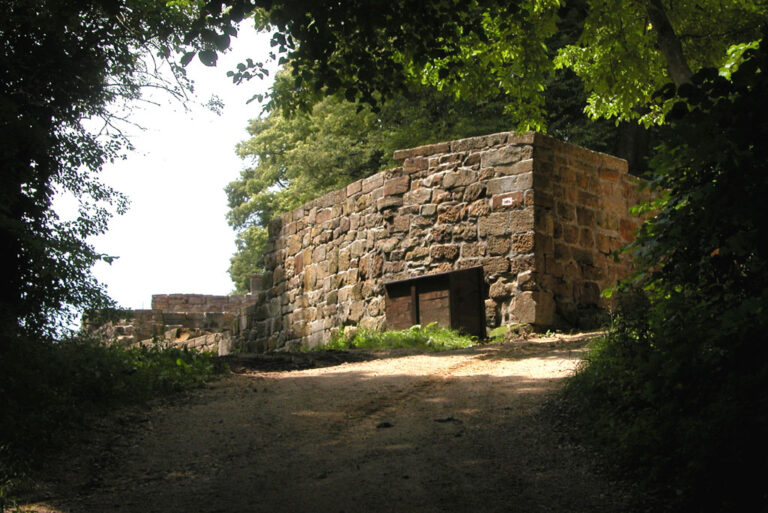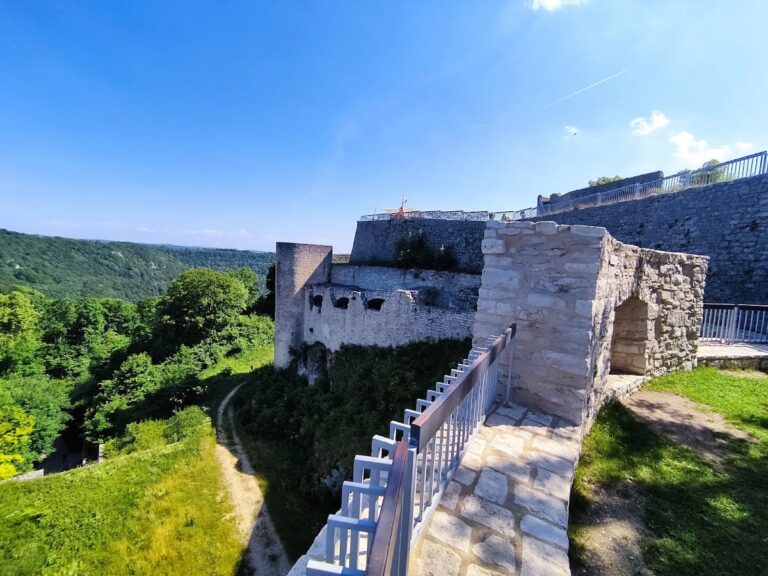Burg Staufeneck: A Historic Castle Ruin in Salach, Germany
Visitor Information
Google Rating: 4.5
Popularity: Low
Google Maps: View on Google Maps
Official Website: www.burg-staufeneck.de
Country: Germany
Civilization: Medieval European
Remains: Military
History
Burg Staufeneck is a castle ruin situated above the municipality of Salach in Germany. Its exact founding date is uncertain, with sources dating its origin either around 1080 or in the mid-13th century, around 1240. The original builders were the Lords of Staufeneck, a noble family likely connected to the Staufer dynasty, as suggested by shared heraldic symbols such as the lion in their coat of arms.
The castle remained in the possession of the Lords of Staufeneck until 1333, when ownership transferred to the Lords of Rechberg zu Staufeneck. This family’s tenure continued until 1599, when their line came to an end. After that, control passed to Gertraud von Schutzbar, née Milchling, and her kin. During the early 1600s, Burg Staufeneck became involved in complex ownership disputes involving Duke Friedrich I of Württemberg. The duke took forceful action by entering the castle against the will of its owners around 1601 to 1604.
Throughout the 17th century, the castle experienced several changes in ownership. It belonged for a time to Friedrich von Württemberg before passing to Georg Ludwig von Freyberg. Following this, Anna Margaretha held possession under the guardianship of Bishop Heinrich of Augsburg, linking the site to ecclesiastical oversight. In 1642, the fortress became the property of Generalwachtmeister Wilhelm von Guyn. After Guyn’s death in 1661, the castle was sold to Ferdinand von Degenfeld. Christoph Martin von Degenfeld-Schonburg, who lived from 1689 to 1769, later inherited the estate.
Around the turn of the 19th century, the castle began to lapse into neglect. By 1844, it had been largely abandoned and sections were deliberately dismantled. In the 20th century, efforts began to revive Burg Staufeneck’s structural remains. The main tower, known as the bergfried, was made accessible again in 1926. Starting the following year, parts of the site were repurposed for hospitality uses, initiating a new chapter in the castle’s long history.
Remains
Burg Staufeneck occupies a rocky spur that rises 529 meters above sea level on the southwestern edge of the Rehgebirge, overlooking the Filstal valley. The castle’s strategic position faces a counterpart fortress, Burg Ramsberg, located on the opposite southeastern ridge. This positioning reflects its original military and administrative role as a spur castle, built to take advantage of natural terrain for defense.
Among the surviving architectural elements, the bergfried stands out as the most prominent feature. This central tower reaches a height of 27 meters and was restored to allow visitor access in 1926. The tall structure reveals typical medieval construction techniques and has been preserved as a key landmark of the site’s fortifications.
In addition to the bergfried, the west section of the castle has been adapted for use as a hotel and restaurant since 1927. These renovations involved careful modification of the existing ruins to accommodate contemporary functions while maintaining historical integrity.
Within the castle grounds, the “Anselm-Schott-Haus” remains a notable ancillary building. This house is historically significant as the birthplace of Anselm Schott in 1843. Its preservation offers a glimpse into the domestic aspects connected to the castle’s later periods.
The castle complex today presents a combination of preserved medieval masonry and modern adaptations. Although many original elements have either decayed or been removed over time, these remaining structures offer insight into the site’s layered history. There are no recorded inscriptions, mosaics, or archaeological finds such as tools or pottery preserved on the site, focusing attention primarily on the stone architecture that has withstood the centuries.






